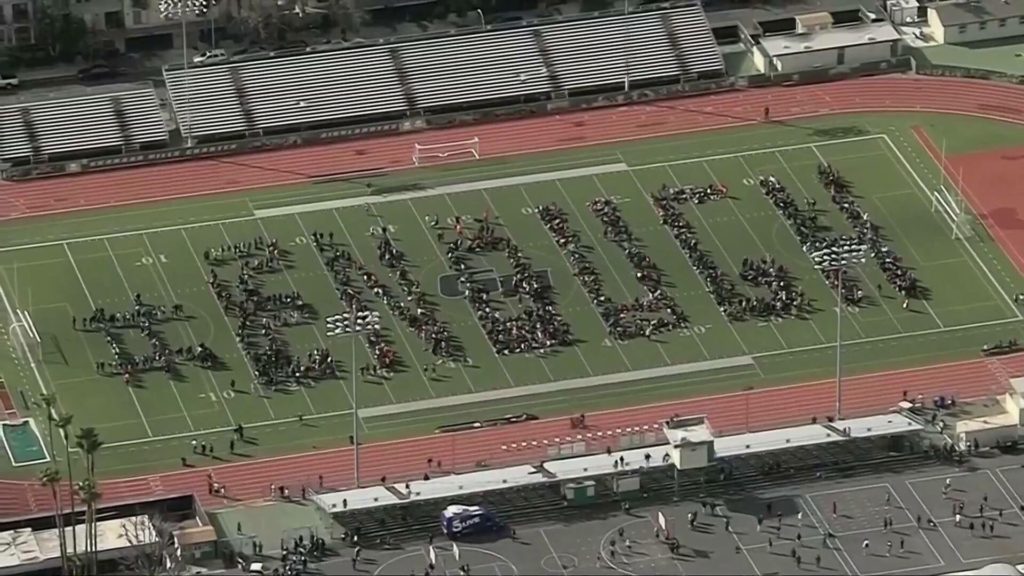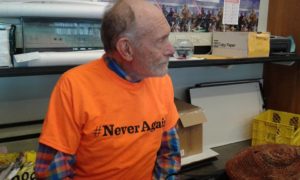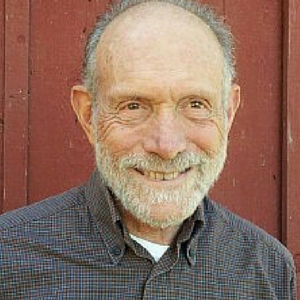If this is #enough, then what’s next?

“Protests come and go, almost no matter what the scale and entrenched regimes of violence and injustice wait them out.”
There have been far too many pious clichés in response to all these tragedies, but I’m going to risk one more: if – and it remains to be seen – this one will lead to a wave of awakening and permanent, significant changes to the culture of violence we are suffering through, then the violent death of those seventeen people may not have been entirely in vain.
What will it take to make that kind of difference?
We have very happily reached a point now where this is not an idle question. Enough systematic studies of nonviolence have now been done – a mere beginning, but what a difference it makes when until recently there was practically nothing – that we can be confident about some ‘best practices’ for many kinds of nonviolent resistance. One thing is clear: the walkout, in which something like 3,000 high schools across the country saw students taking action, with or without the support of their teachers and administrators, was a great beginning.
No less, but no more.
Protests come and go, almost no matter what the scale and entrenched regimes of violence and injustice wait them out. We need three things to parlay the solidarity and concern they evince into real change: continuity (what Latin American activists call firmeza permanente), determination, including the willingness to sacrifice, and of course strategy. To rely on some kind of atrocity (which this is) to galvanize our reaction is a recipe for sure, painful defeat. Look at Egypt, or almost any country that experienced “Arab Spring.”
Let’s do them in reverse order.
For an action to become a campaign and a campaign a movement (thanks to thoughtful activist George Lakey for those terms) it must have a credible path forward from the “effervescence of the crowd,” as we call it, step after step, to victory. Victory itself should be visionary to really work – remember Gandhi’s proud appellation for himself as a “practical idealist.” But the steps should be progressive, and realistic. In broad terms, for example, we have been working with ‘giant steps’ from institutionalizing restorative justice in the nation’s schools to our overstuffed prison system to – why not? – the deconstruction of war. In nonviolence, as in war itself, you have these steps but life happens: you have to be flexible enough to take advantage of opportunities and regroup in the face of setbacks. Classic example: Gandhi fell back on non-confrontational forms of Constructive Programme, like spinning, when the regime blocked any path of resistance.
Determination is often the nonviolent answer to ruthlessness. Contrary to a popular misconception, nonviolence is not weak; it does not crumble in the face of stark repression, does not, as mentioned, shrink back even from sacrifice and suffering where that must be undertaken to awaken the opponent.
Firmeza or continuity means two things (as I see it). The first is more obvious, the second more important. The first is simply staying the course; not, even in the face of setbacks, giving up, going back to business as usual. For students, in particular, this can be difficult. Gandhi only called them out when he felt he absolutely needed them and their contribution to the movement was more meaningful than their studies.
As Martin Luther King put it, “We shall match your capacity to inflict suffering by our capacity to endure suffering,” and thereby wear you down by the love-in-action that is nonviolence.
And nonviolence is the other dimension of this steadfast continuity: maintaining nonviolent discipline. Power comes from nonviolence in proportion to its depth and continuity. We may never be perfect at it; that’s Ok; but we should never stop trying to engage that spirit in deed, word, and as far as humanly possible even in thought. It is possible.
This is not an exhaustive list, but it’s a good start. The rest is emergent: we will discover it as we go.

Here I am at a local high school where I was invited to speak on a panel with students on March 14. I was joined by two Metta staff members, Stephanie Van Hook and Kimberlyn David (on a rare visit from the Netherlands). Here is the article issued from the local press about the event.
We also recommend checking out:
I Exercise My Right NOT to Bear Arms by Todd Diehl
Terrorism and Nonviolence, a New Story Animation
Grief is Not Enough by Michael Nagler
Love at the Barrel of a Gun by Michael Nagler








